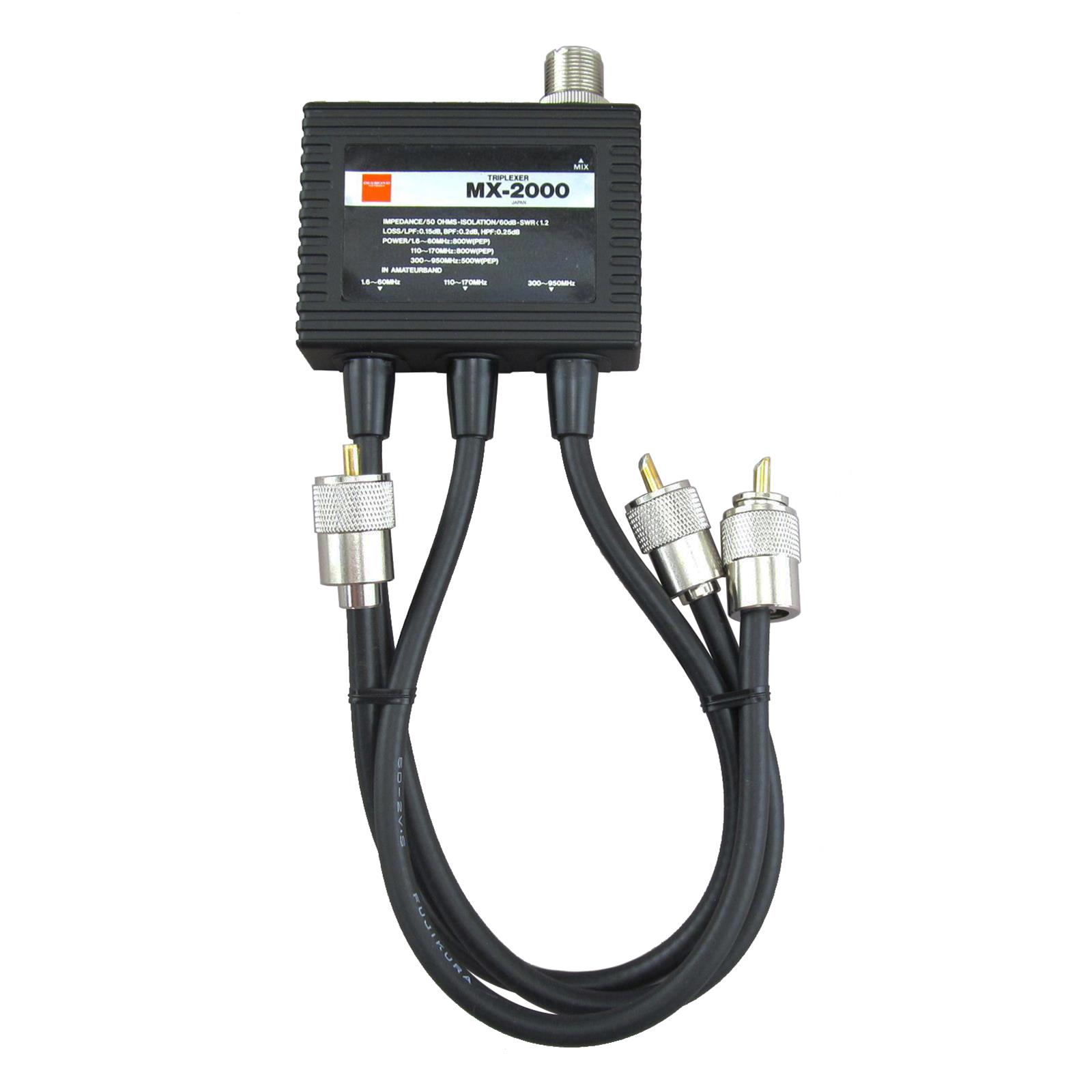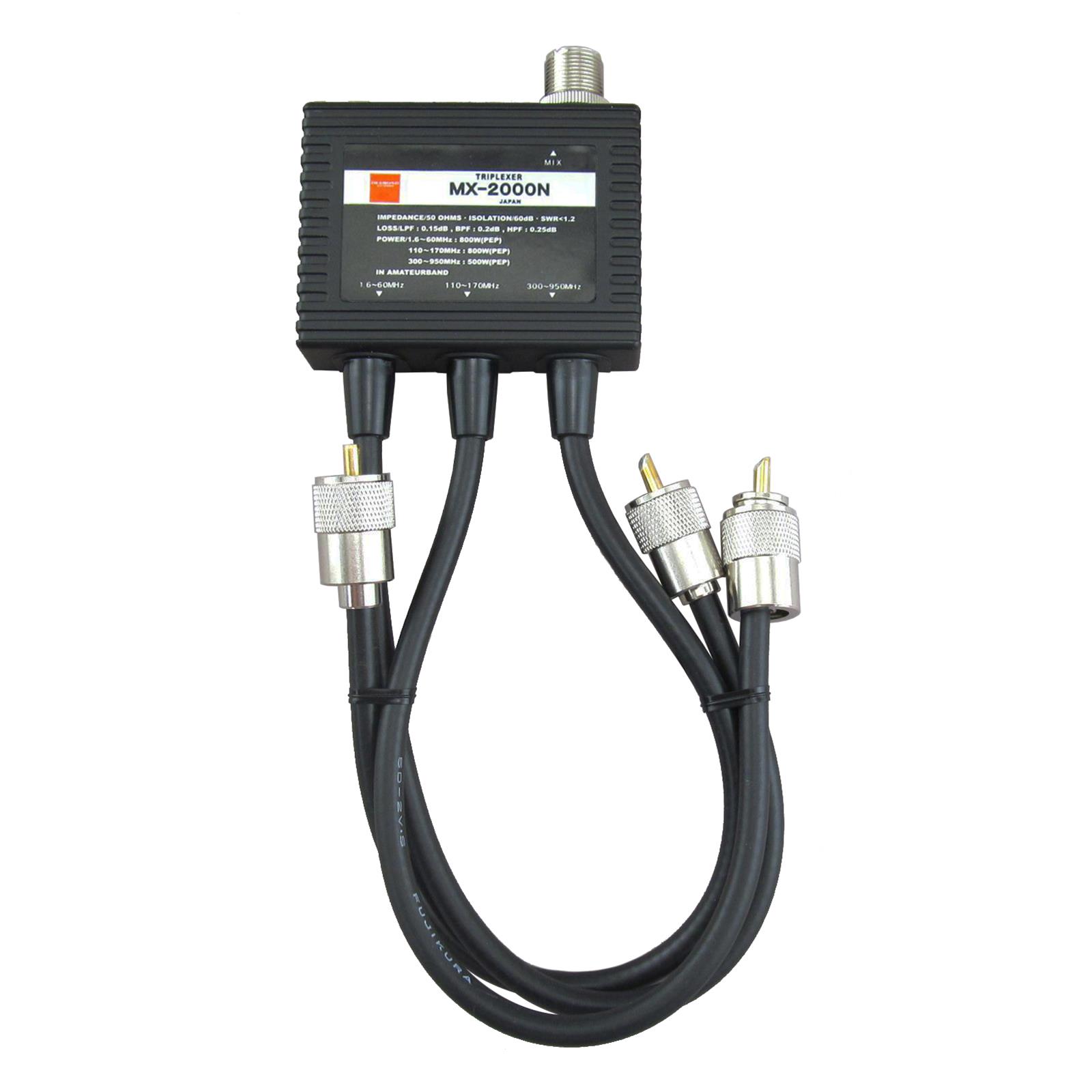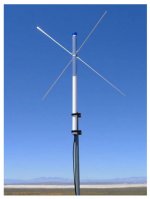Good evening, I am starting to build a new interest in radio and am trying to learning everything I can. I am located in the SF bay area at pretty high elevation (~1500 feet). From my research on here it seems the SDS200 is going to be the best option for me. I would like to inquire about an antenna though. I would like to be able to follow CHP, Calfire, and a few local municipalities in my area especially during weather issues to help stay informed with what is happening since I am pretty remote. Could anyone help in recommending an antenna to me (and any other equipment I may be needing) ? I live in a house and am able to mount external if needed. Thank you in advanced !
- Forums
- U.S. Regional Radio Discussion Forums
- California Radio Discussion Forum
- San Francisco Bay Area Discussion
You are using an out of date browser. It may not display this or other websites correctly.
You should upgrade or use an alternative browser.
You should upgrade or use an alternative browser.
Please help new interest
- Thread starter synackfin
- Start date
your local municipalities, are they P25 700 MHz 800 MHz systems or lower band VHF 150 to 160 MHz like Calfire? if you want to cover CHP low-band 39 MHz and P25 UP to 800 MHz and use one antenna, you would need to look at Discone Antenna D130NJ Super Discone Antenna
I use OmniX Scanner Base Antenna from DPD Productions. It's not Discone and not rated for LowBand but I can hear the CHP just fine with it and if you have high elevation without large obstructions, it should work great
The best antenna for the job you need would have been Antennacraft ST2 I have one still up and it has a great antenna unfortunately it was discounted
I use OmniX Scanner Base Antenna from DPD Productions. It's not Discone and not rated for LowBand but I can hear the CHP just fine with it and if you have high elevation without large obstructions, it should work great
The best antenna for the job you need would have been Antennacraft ST2 I have one still up and it has a great antenna unfortunately it was discounted
Its my understanding (please correct me if I'm wrong) the SDS200 only does 1 antenna at a time and that you generally want to select an antenna that is appropriate for the application (low band vs high band) but I'm not super knowledgeable about this yet. From what I have seen in the database on this site (California Highway Patrol (CHP) (California) Scanner Frequencies and Radio Frequency Reference), CHP Green is 42.540, 42.240 FM and 769.18125, 769.68125 P25 for repeaters. This is what I'm really after since that is who patrols mostly in my area since I'm in an unincorporated part of the county.
So I guess there is a few questions here -
1) With the ranges I've listed should I have multiple antenna's or can i efficiently run on a single antenna?
2) Can I run multiple antennas to cover multiple applications at once or is this generally why people will run multiple radios ?
3) Does my elevation help at all with range ?
also ..
4) I have read some posts about a move to CRIS but am still unclear what this means for me. any enlightenment would be appreciated
Thank you !!
So I guess there is a few questions here -
1) With the ranges I've listed should I have multiple antenna's or can i efficiently run on a single antenna?
2) Can I run multiple antennas to cover multiple applications at once or is this generally why people will run multiple radios ?
3) Does my elevation help at all with range ?
also ..
4) I have read some posts about a move to CRIS but am still unclear what this means for me. any enlightenment would be appreciated
Thank you !!
Correct SDS200 has only one Antenna Port
1) With the ranges I've listed should I have multiple antenna's or can i efficiently run on a single antenna? You need to use a single antenna
2) Can I run multiple antennas to cover numerous applications at once or is this generally why people will run multiple radios? It will not be efficient. You will have a signal loss. It is best to use one antenna as it will be compromised
3) Does my elevation help at all with range? YES Elevation helps unless you have a lot of obstructions, like if you are in a high valley and have tall mountains surrounding you and with a Low band, the signal will travel further
4) I have read some posts about a move to CRIS but am still unclear what this means for me. Any enlightenment would be appreciated
CRIS is a Future and OmniX Scanner Base Antenna or Discone Antenna will cover 700 MHz, Lowband will be used for some time. The 700 MHz is mostly for Extenders and In-office use. You have to be Close to the unit and it just repeats the low band.
1) With the ranges I've listed should I have multiple antenna's or can i efficiently run on a single antenna? You need to use a single antenna
2) Can I run multiple antennas to cover numerous applications at once or is this generally why people will run multiple radios? It will not be efficient. You will have a signal loss. It is best to use one antenna as it will be compromised
3) Does my elevation help at all with range? YES Elevation helps unless you have a lot of obstructions, like if you are in a high valley and have tall mountains surrounding you and with a Low band, the signal will travel further
4) I have read some posts about a move to CRIS but am still unclear what this means for me. Any enlightenment would be appreciated
CRIS is a Future and OmniX Scanner Base Antenna or Discone Antenna will cover 700 MHz, Lowband will be used for some time. The 700 MHz is mostly for Extenders and In-office use. You have to be Close to the unit and it just repeats the low band.
How long will your Coax cable run be, and will you mount the antenna outside on the mast?
Can you try the stock antenna that comes with the SDS200 just to see if you can receive CHP before going with the external
External will give you more range
Can you try the stock antenna that comes with the SDS200 just to see if you can receive CHP before going with the external
External will give you more range
How long will your Coax cable run be, and will you mount the antenna outside on the mast?
Can you try the stock antenna that comes with the SDS200 just to see if you can receive CHP before going with the external
External will give you more range
Coax run would be about 30-50 feet. I will certainly try the stock antenna first. The only obstructions I have are trees.
mmckenna
I ♥ Ø
I'm going to add a little bit here, some of it contradicts above:
There really are not any decent antennas that will cover all that range for a base station application. Discone's are mediocre antennas at best, their only saving grace is that they cover a lot of spectrum in one package. A lot of them will claim "25MHz - 1300MHz coverage". Don't believe that. Most of them are good for about 100MHz and up, but even then they are pretty poor overall, and not very good up near the high end.
They often have a single vertical whip on top that is usually tuned for the 6 meter amateur radio band, and even with that, they don't perform as well as a real dedicated antenna there.
If you could only have one antenna, and lived somewhere with mostly strong signals, a discone can be a decent option. They are not the perfect antenna for every application. Like I said, mediocre at best.
You can use a diplexer and combine multiple antennas. A diplexer is a tuned device that passes certain segments of the RF spectrum on certain ports. It will allow you to run two or more antennas, and if done right, can work pretty well.

 www.dxengineering.com
www.dxengineering.com

 www.dxengineering.com
www.dxengineering.com
Dedicated/band specific antennas will outperform "do it all" antennas. But, keep in mind, you have to have a place to mount those antennas, and you need to have appropriate coaxial cable to your radio.
On the other hand, most public safety radio systems are generally well designed/built to cover the jurisdiction of the agency that uses them, often for portable radios. If it is a local agency you want to listen to, you shouldn't need much antenna to get it to work. If you are trying to listen to agencies well outside your area, then more antenna will be needed.
There is not one antenna solution that works for every application. Unless one of your next door neighbors is doing the exact same listening you are, some of this is going to be trial and error. Often people want to be told exactly what antenna they should buy, and it doesn't always work out well. Trial and error is sometimes necessary.
No matter how much antenna you have, you may not be able to hear everything you want. Agencies put a lot of money into designing their radio systems to cover their area. There isn't any benefit to providing radio coverage well outside their jurisdiction.
If your antenna has line of sight to the transmitter, you should be able to receive them. If you do not, you may not be able to.
Good antenna systems can be costly. $25 Amazon/Chinese antennas usually are not good performers. Good antennas cost money.
Your antenna system is only as good as the cable that connects it to your radio. All coaxial cable has some amount of loss. Loss goes up with frequency. Loss also goes up with cable length. Long cable runs require good cable, so plan your locations carefully.
Put a lot of thought into your antenna design, and don't cut corners. Your radio is only as good as the antennas connected to it. Cheap antennas can work if the signals are strong. Heck, a paper clip can work as a good antenna if you are near the transmitter, so take others experience with a grain of salt.
Elevation generally helps. However:
Too much elevation can create problems. Frequencies get reused in geographically separate areas. Having a high elevation may result in you hearing multiple signals on the same frequencies. Careful antenna choice/location can help with that.
Elevation alone isn't going to solve all issues. Most of the frequencies used in public safety are line of sight. If you are high up, but have a lot of obstructions, it's going to be an issue.
CHP will eventually migrate most of their operations off the current low band analog radio system to the statewide digital trunked radio system (CRIS). Those CHP talk groups will almost definitely be encrypted. I wouldn't worry about that right now, though, as it's probably a few years off. The CRIS system exists and has pretty good coverage in most of the bay area, but there is still some ongoing build out of the system, testing is in process, and the entire migration will take some time.
So I guess there is a few questions here -
1) With the ranges I've listed should I have multiple antenna's or can i efficiently run on a single antenna?
There really are not any decent antennas that will cover all that range for a base station application. Discone's are mediocre antennas at best, their only saving grace is that they cover a lot of spectrum in one package. A lot of them will claim "25MHz - 1300MHz coverage". Don't believe that. Most of them are good for about 100MHz and up, but even then they are pretty poor overall, and not very good up near the high end.
They often have a single vertical whip on top that is usually tuned for the 6 meter amateur radio band, and even with that, they don't perform as well as a real dedicated antenna there.
If you could only have one antenna, and lived somewhere with mostly strong signals, a discone can be a decent option. They are not the perfect antenna for every application. Like I said, mediocre at best.
2) Can I run multiple antennas to cover multiple applications at once or is this generally why people will run multiple radios ?
You can use a diplexer and combine multiple antennas. A diplexer is a tuned device that passes certain segments of the RF spectrum on certain ports. It will allow you to run two or more antennas, and if done right, can work pretty well.

Diamond Antenna MX2000 Diamond Antenna Triplexers | DX Engineering
Free Shipping - Diamond Antenna Triplexers with qualifying orders of $99. Shop Duplexers and Triplexers at DX Engineering.

Diamond Antenna MX2000N Diamond Antenna Triplexers | DX Engineering
Free Shipping - Diamond Antenna Triplexers with qualifying orders of $99. Shop Duplexers and Triplexers at DX Engineering.
Dedicated/band specific antennas will outperform "do it all" antennas. But, keep in mind, you have to have a place to mount those antennas, and you need to have appropriate coaxial cable to your radio.
On the other hand, most public safety radio systems are generally well designed/built to cover the jurisdiction of the agency that uses them, often for portable radios. If it is a local agency you want to listen to, you shouldn't need much antenna to get it to work. If you are trying to listen to agencies well outside your area, then more antenna will be needed.
There is not one antenna solution that works for every application. Unless one of your next door neighbors is doing the exact same listening you are, some of this is going to be trial and error. Often people want to be told exactly what antenna they should buy, and it doesn't always work out well. Trial and error is sometimes necessary.
No matter how much antenna you have, you may not be able to hear everything you want. Agencies put a lot of money into designing their radio systems to cover their area. There isn't any benefit to providing radio coverage well outside their jurisdiction.
If your antenna has line of sight to the transmitter, you should be able to receive them. If you do not, you may not be able to.
Good antenna systems can be costly. $25 Amazon/Chinese antennas usually are not good performers. Good antennas cost money.
Your antenna system is only as good as the cable that connects it to your radio. All coaxial cable has some amount of loss. Loss goes up with frequency. Loss also goes up with cable length. Long cable runs require good cable, so plan your locations carefully.
Put a lot of thought into your antenna design, and don't cut corners. Your radio is only as good as the antennas connected to it. Cheap antennas can work if the signals are strong. Heck, a paper clip can work as a good antenna if you are near the transmitter, so take others experience with a grain of salt.
3) Does my elevation help at all with range ?
also ..
Elevation generally helps. However:
Too much elevation can create problems. Frequencies get reused in geographically separate areas. Having a high elevation may result in you hearing multiple signals on the same frequencies. Careful antenna choice/location can help with that.
Elevation alone isn't going to solve all issues. Most of the frequencies used in public safety are line of sight. If you are high up, but have a lot of obstructions, it's going to be an issue.
4) I have read some posts about a move to CRIS but am still unclear what this means for me. any enlightenment would be appreciated
CHP will eventually migrate most of their operations off the current low band analog radio system to the statewide digital trunked radio system (CRIS). Those CHP talk groups will almost definitely be encrypted. I wouldn't worry about that right now, though, as it's probably a few years off. The CRIS system exists and has pretty good coverage in most of the bay area, but there is still some ongoing build out of the system, testing is in process, and the entire migration will take some time.
Coax run would be about 30-50 feet. I will certainly try the stock antenna first. The only obstructions I have are trees
For 30 feet, you can use RG8X. if you have longer run LMR-400 better I love the Build quality of the OmniX Scanner Base Antenna and they sell the RG8X
Attachments
Before you invest in an outside antenna, try the telescopic antenna that comes with the radio. You may hear everything you want with it.
Similar threads
- Replies
- 10
- Views
- 1K
- Replies
- 1
- Views
- 305
BCD325P2/BCD996P2:
Help programming TGID
- Replies
- 15
- Views
- 797
- Replies
- 16
- Views
- 933


